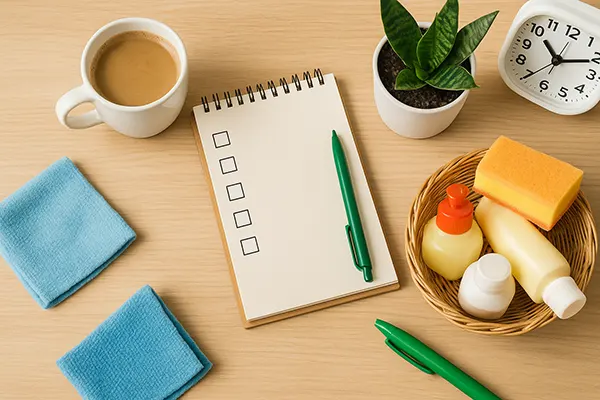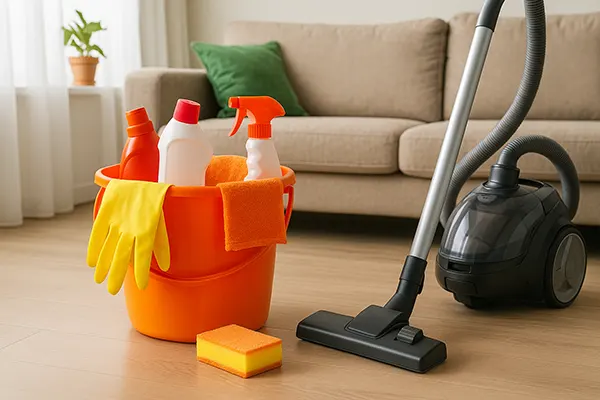
Morning and Evening Checklists for a Stress-Free Household Routine
Keeping up with daily domestic duties can easily turn into a source of stress and emotional exhaustion, especially when responsibilities are scattered and poorly structured. For many homemakers, a defined system can make all the difference. That’s where morning and evening checklists come in — they help maintain clarity, reduce anxiety and promote consistency. Let’s explore how to build effective checklists and integrate them smoothly into everyday life.
Morning Routine: Efficient Start to the Day
The start of your day sets the tone for everything that follows. With a well-thought-out morning checklist, you can avoid rushing and mental clutter. This is not about stuffing tasks into the first 30 minutes of your morning — it’s about prioritising wisely and staying focused.
Begin by identifying the essentials: make the bed, open the windows for fresh air, and tidy up any clutter from the night before. Include self-care steps like brushing teeth, stretching or a brief walk — this helps shift your mindset from rest to readiness. If you prepare school lunches or breakfast, include those actions in the list too.
Stick to 6–8 core tasks. Having more can be overwhelming and reduce the checklist’s usefulness. Keep it visible — print and pin it on the fridge or use a whiteboard in the kitchen. This not only keeps you on track but allows others to join in.
Structuring a 30-Minute Morning Flow
Plan your checklist to match your household’s rhythm. If your children wake up at 7 a.m., make sure your checklist starts no later than 6:30 a.m. This 30-minute buffer gives you room to breathe and leads to smoother mornings.
Organise the checklist by time blocks: 10 minutes for hygiene, 10 minutes for meal preparation, and 10 minutes for house tidying. This segmentation turns an abstract ‘to-do list’ into a practical timeline you can follow without overthinking.
Importantly, review and adjust the checklist every couple of weeks. Needs evolve — so should your routine. Flexibility is key to ensuring the checklist remains a helpful guide and not an additional burden.
Evening Steps for a Smoother Tomorrow
The evening routine sets the foundation for a calm start the following day. It doesn’t have to be long, but it should be consistent and mindful. Use the checklist format again to streamline repetitive tasks and lower mental load before bed.
Tasks might include: setting out clothes for tomorrow, preparing lunch ingredients, quickly reviewing the next day’s schedule, and ensuring the kitchen is clean. A short household reset every night saves time and decision fatigue in the morning.
Integrate personal wind-down time into the list — reading, skincare, or a brief moment of reflection. These activities are equally important and contribute to a sense of completion at the day’s end.
Checklist as a Sleep Aid
One of the overlooked benefits of evening checklists is better sleep quality. When tasks are written down and completed in sequence, the mind feels at ease. There’s no need to replay what you might have forgotten.
This psychological closure is especially valuable for those who manage households — it creates space to rest without guilt. Try incorporating a short gratitude note or journaling line at the end of the checklist to reinforce positivity.
Sleep routines tied to checklist cues (e.g., brushing teeth after putting away dishes) also help children develop consistency. The earlier these patterns are modelled, the easier they are to sustain in the long run.

Using Digital Tools to Stay Organised
While paper lists work well for many, digital tools offer additional advantages such as reminders, recurring tasks and synchronisation across family devices. They can support accountability and simplify routine management.
Apps like Microsoft To Do, TickTick and Google Keep allow you to create reusable checklists, assign tasks to family members, and set timed notifications. For more advanced features, apps like Cozi or OurHome include shared calendars and chore assignments.
Use simple labels like “morning reset” or “evening wind-down” to categorise and access your checklists quickly. If you’re new to digital tools, start small — set up one checklist first and test it for a week before adding more.
Balancing Tech With Simplicity
Technology is meant to assist, not complicate. If you notice a digital system causing delays or screen distractions, scale back. Prioritise usability over aesthetics or advanced functions.
For families with children, consider age-appropriate task apps with visual cues. For example, kids can tick off illustrated steps like brushing teeth or packing school bags, making them more engaged in the routine process.
Finally, always have a backup: a printed version of the checklist or a manual trigger (like a sticky note) to maintain flow when devices fail or notifications go unnoticed.
